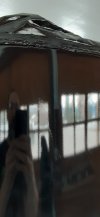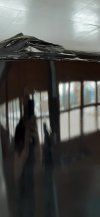Dean
Promoted Users
Hey. New on here and first tine trying spi epoxy primer.
So im painting a 27 model a. Just a touch up here n there over old paint.
We striped the rear panel and did our body work over the existing priners and finish....and this is old skool nitrocellulose laquer for paint.
After filler was done we epoxy'd our repair areas with a 1:1 mix.
Sanded it all down in 600 wet. Any spots we burnt through i hit with same epoxy reduced 15% to be as a sealer.
Today i laid down my laquer paint. Everywhere edges of the epoxy are has bit in big time to show the line and sanding scratches.
Im new to old skool laquers and guy im doibg this for says its expected. Its not for me in my paint exp.
So is this an expected issue being so heavy in solvents in the paint?
Dam that epoxy is tough stuff to sand lol
So im painting a 27 model a. Just a touch up here n there over old paint.
We striped the rear panel and did our body work over the existing priners and finish....and this is old skool nitrocellulose laquer for paint.
After filler was done we epoxy'd our repair areas with a 1:1 mix.
Sanded it all down in 600 wet. Any spots we burnt through i hit with same epoxy reduced 15% to be as a sealer.
Today i laid down my laquer paint. Everywhere edges of the epoxy are has bit in big time to show the line and sanding scratches.
Im new to old skool laquers and guy im doibg this for says its expected. Its not for me in my paint exp.
So is this an expected issue being so heavy in solvents in the paint?
Dam that epoxy is tough stuff to sand lol


